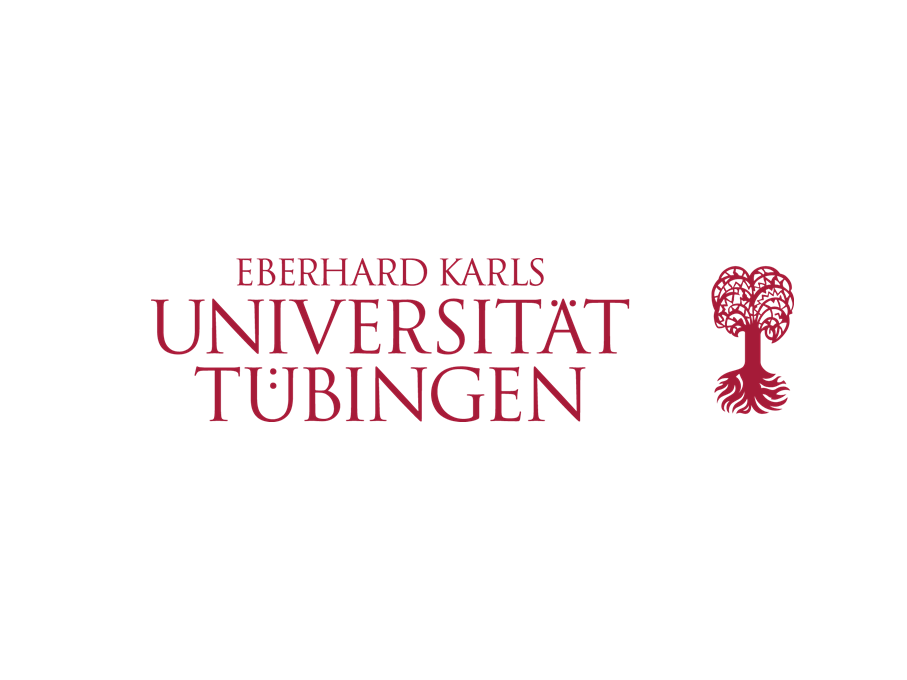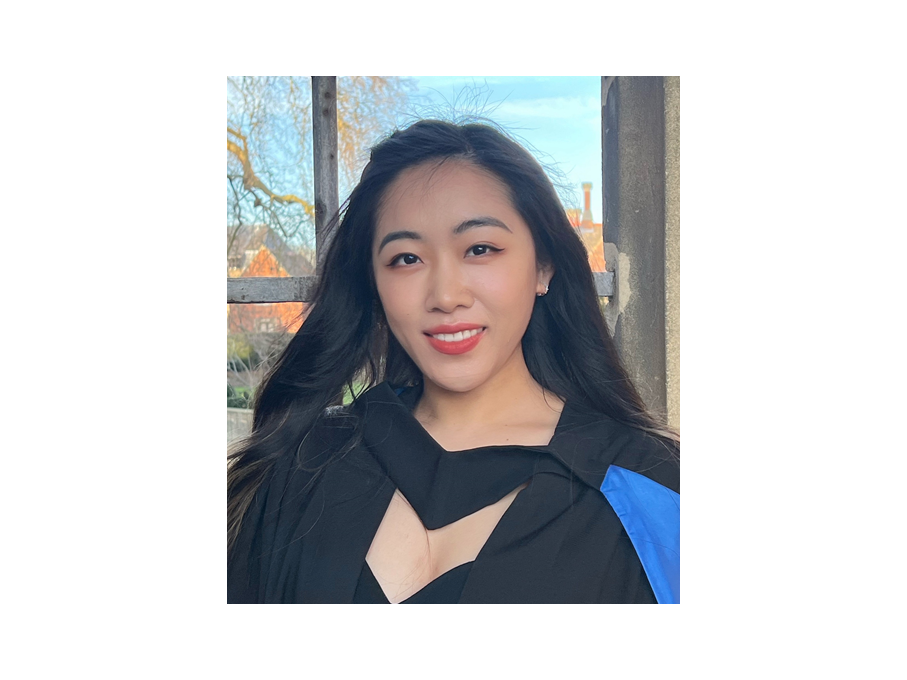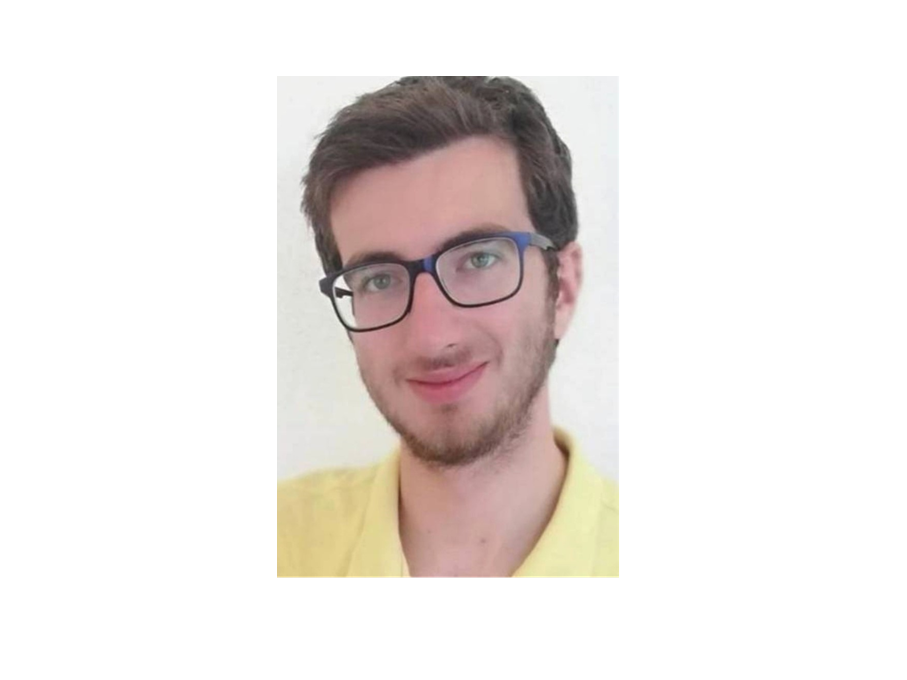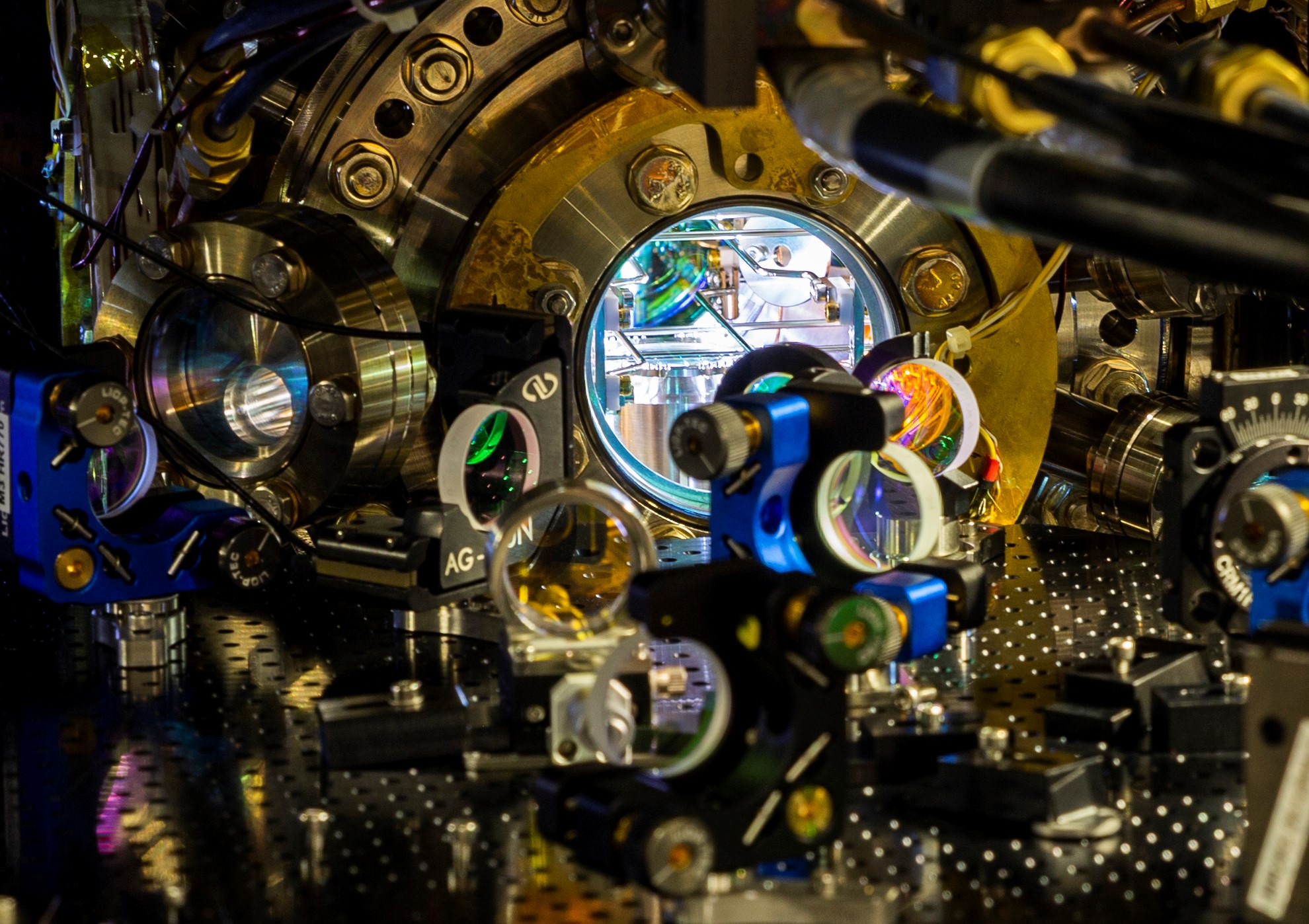University of Tübingen
Quantum Many-Body Physics Research Group

Role in the consortium
Our team is responsible for building a cryogenic quantum processor with on strontium-87. Distinct to strontium-87, this isotope features a non-zero nuclear spin and we will utilize the well shielded energy levels in the ground state to define the Quibit. We pursue an cryogenic approach to the vacuum chamber in order to realize record life- and coherence-times of the atoms in the tweezers.
What are the goals?
- Develop a cryogenic system for Rydberg atoms in optical tweezer arrays
- Demonstrate an atom lifetime of more than 10 minutes and a coherence time of at least one minute
- Demonstrate suppression of black-body radiation induced state transitions
- Demonstrate high-fidelity gate operations among nuclear spin qubits
How do we plan to achieve that?
We will develop a versatile vacuum system to combine a room temperature magneto-optical trap with a well shielded cryogenic chamber at 4K. The atoms will be quickly transported into the protected cryogenic environment and loaded into an holographically generated tweezer array. A cryo-compatible fully-achromatic in-vacuum objective will be used to generate the array, as well as to image and control individual strontium-87 atoms. The qubit energy spacing will be defined by an external magnetic field, which is generated by a superconducting Helmholtz coil pair. This will minimize dephasing of the qubit array by fluctuating external magnetic fields.
Single-Qubit manipulations will be implemented using a robust Raman-laser system, whose difference frequency is defined by ultra-low-phase noise RF-sources. For entangling operations we will use two-photon coupling to Rydberg states. The red photons spatial mode can be easily tailored to address one or several atoms in the array, avoiding the need to shape the UV photon mode.
Open positions
If you are excited about quantum computing with neutral atoms and would like to develop cutting-edge technology – join us!
We are hiring:
- Outstanding experimental physics PhD students with experience in atomic physics, laser optics, and electronics.
- Postdoctoral researchers with an atomic, molecular and optical (AMO) physics, precision measurement, or experimental quantum information background.
Visit our group website for more information on open positions.
Team
Our team has several year of experience in arrays of Rydberg atoms in holographically generated optical tweezers, quantum simulation with optical lattices and single atom sensitive imaging high-resolution imaging [1, 2]. We explored collective decoherence effects in Rydberg tweezer arrays [3] and developed low-noise, high power laser systems for Rydberg atom control [4].
[1] C. Gross and I. Bloch. Quantum simulations with ultracold atoms in optical lattices, Science 357, 995–1001 (2017)
[2] C. Gross and W. S. Bakr, Quantum gas microscopy for single atom and spin detection, Nat. Phys. 17, 1316–1323 (2021)
[3] L. Festa, N. Lorenz, L.-M. Steinert, Z. Chen, P. Osterholz, R. Eberhard and C. Gross, Blackbody-radiation-induced facilitated excitation of Rydberg atoms in optical tweezers, Phys. Rev. A 105, 013109 (2022)
[4] N. Lorenz, L. Festa, L.-M. Steinert and C. Gross, Raman sideband cooling in optical tweezer arrays for Rydberg dressing, SciPost Physics 10, 052 (2021)
Prof. Dr. Christian Groß
Principal investigator

Christian Groß the quantum many-body physics group at the University of Tübingen. He has a long track-record on precision many-body experiments with neutral atoms in optical lattices and tweezers. Two exemplary milestones are the development of one of the first quantum gas microscopes for lithium and the first realization of optical tweezers for individual Potassium atoms. More information is available on the group homepage.
Xintong Su
Doctoral Candidate

Xintong did her Masters on laser cooling of Strontium atoms in the group of Ulrich Schneider at the University of Cambridge. In her project she worked on the design of optical transport of ultracold atoms for atom interferometry. Her research interests are focused on quantum computation and quantum information.
Roberto Franco
Doctoral Candidate

During his Masters Roberto worked with Rubidium Rydberg atoms in a magneto-optical trap in the group of Oliver Morsch at the University of Pisa. He studied the suppression of black body radiation at the position of the atoms by engineering the spatial mode structure using electrically conducting plates. His research interests are focused on quantum simulations and computation with neutral atoms.
Contact persons
Scientific questions and open positions:
Prof. Dr. Christian Groß christian.gross(at)uni-tuebingen.de

Funding acknowledgement
Sponsored by the Federal Ministry of Education and Research, grant number 13N16086
